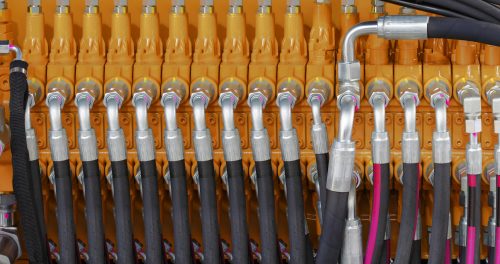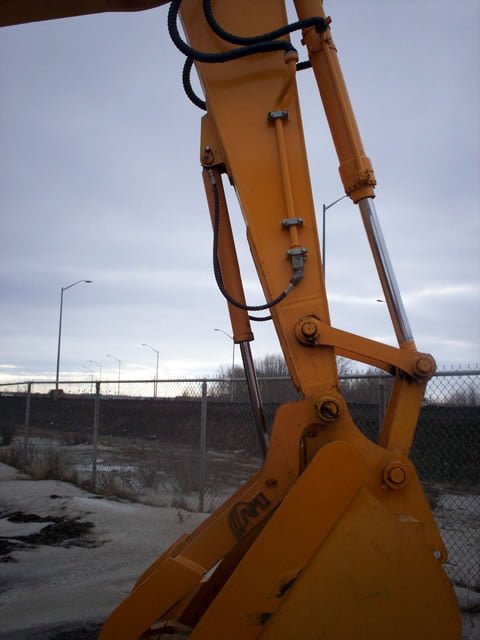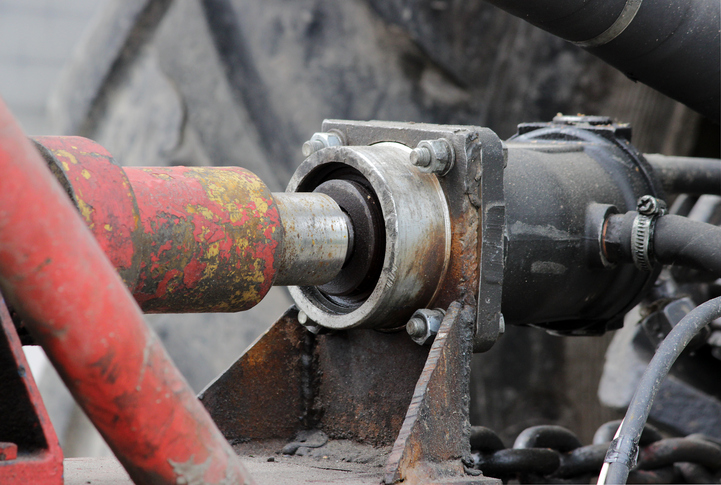 Replacing Hydraulic lines on your equipment can often seem like a nuisance due to its regular occurrence and the associated downtime. Hydraulic lines often fail catastrophically during equipment use which can lead to a loss in productivity and frustration on the job.
Replacing Hydraulic lines on your equipment can often seem like a nuisance due to its regular occurrence and the associated downtime. Hydraulic lines often fail catastrophically during equipment use which can lead to a loss in productivity and frustration on the job.
Hydraulic line failure is most often not a result of poor maintenance, but rather, the result of normal wear and tear on your equipment. The hydraulic lines on your equipment are used to transport the high pressure hydraulic fluid from the pump and control valves to the cylinders or motors actually doing the work. Most of the time, the fluid will be transported through hard lines which are rigid and last much longer. At certain points on your equipment, the high pressure fluid has to be transported across a pivot point in which case the hydraulic line will need to be flexible to allow the equipment to articulate and the fluid to continue to flow.
At these pivot points, soft hydraulic lines will be used to transport the fluid. These soft lines are extremely durable so they are rarely soft to the touch but are flexible enough to allow the machine to move. The exact type and strength of hose used can sometimes be specified by the equipment manufacturer, but often is regulated by a larger governing body like the Society of Automotive Engineers or U.S. Coast Guard for marine hydraulics due to the extreme nature of their operating environment and the risks associated with failure.
Since flexible hydraulic lines have to be attached to either a hard line, valve, or hydraulic equipment, there will also be a hard fitting at the end of the hose to attach it and provide a leak-free connection. It is where the flexible hose meets this hard metal fitting that most hydraulic line leaks are formed so it’s important to regularly inspect the soft hydraulic lines at their connection points for evidence of a leak.
The best way to watch for leaks in hydraulic lines is to regularly clean your equipment and check for leaks during the cleaning as well as the first use after the cleaning. Regular cleanings will help keep dirt and grime from masking slow hydraulic leaks. It will also give you the chance to spend some time looking over the equipment and making sure everything is in good working order.
If you discover a hydraulic line leak, the best thing to do is to replace or rebuild the line to avoid future problems. Local auto parts stores, truck supply, or farm supply stores are the best place to start when it comes to replacing hydraulic lines.
While you’re performing your regular equipment cleaning, you may notice leaks in other areas of your hydraulic equipment. When it comes to hydraulic lines, the best thing to do is replace them. When it comes to leaks in your hydraulic seals, the best thing to do is use BlueDevil Hydraulic Stop leak to restore and recondition the seals. This will not only stop your leak but save you money and time.
For more information about BlueDevil Hydraulic Stop leak, click on the banner below!

You can purchase BlueDevil Hydraulic Stop Leak at any of our partnering local auto parts stores like:
- AutoZone
- Advance Auto Parts
- Bennett Auto Supply
- CarQuest Auto parts
- NAPA Auto Parts
- O’Reilly Auto Parts
- Pep Boys
- Fast Track
- Bumper to Bumper Auto Parts Specialists
- S&E Quick Lube Distributer
- DYK Automotive
- Fisher Auto Parts stores
- Auto Plus Auto Parts stores
- Hovis Auto & Truck Supply stores
- Salvo Auto Parts
- Advantage Auto Stores
- Genuine Auto Parts stores
- Bond Auto Parts stores
- Tidewater Fleet Supply
- Bumper to Bumper Auto Parts
- Any Part Auto Parts
- Consumer Auto Parts
Pictures Provided By:
hydraulic_lines.jpg – By Suljo – Licensed by Getty images – Original Link
BlueDevil Products can be found on Amazon.com or at AutoZone, Advance Auto Parts, O’Reilly Auto Parts, NAPA, and other major auto parts retailers.
Related Articles



